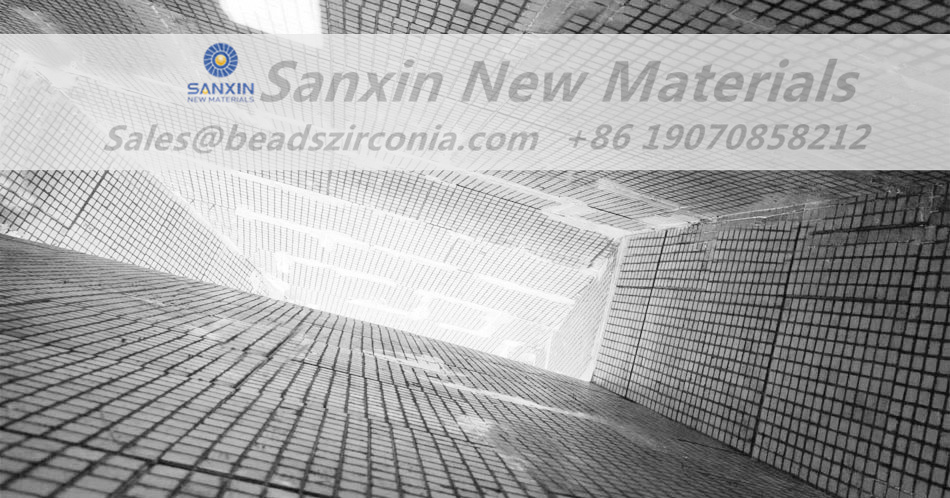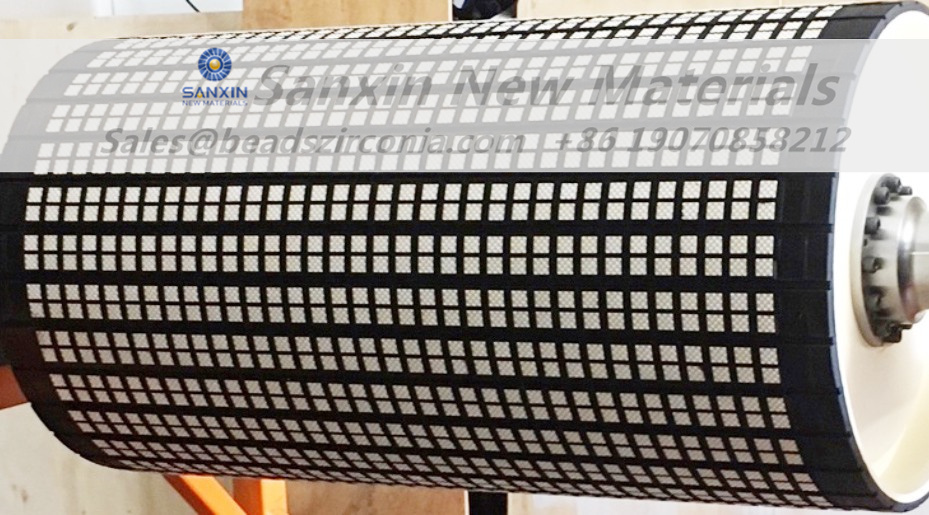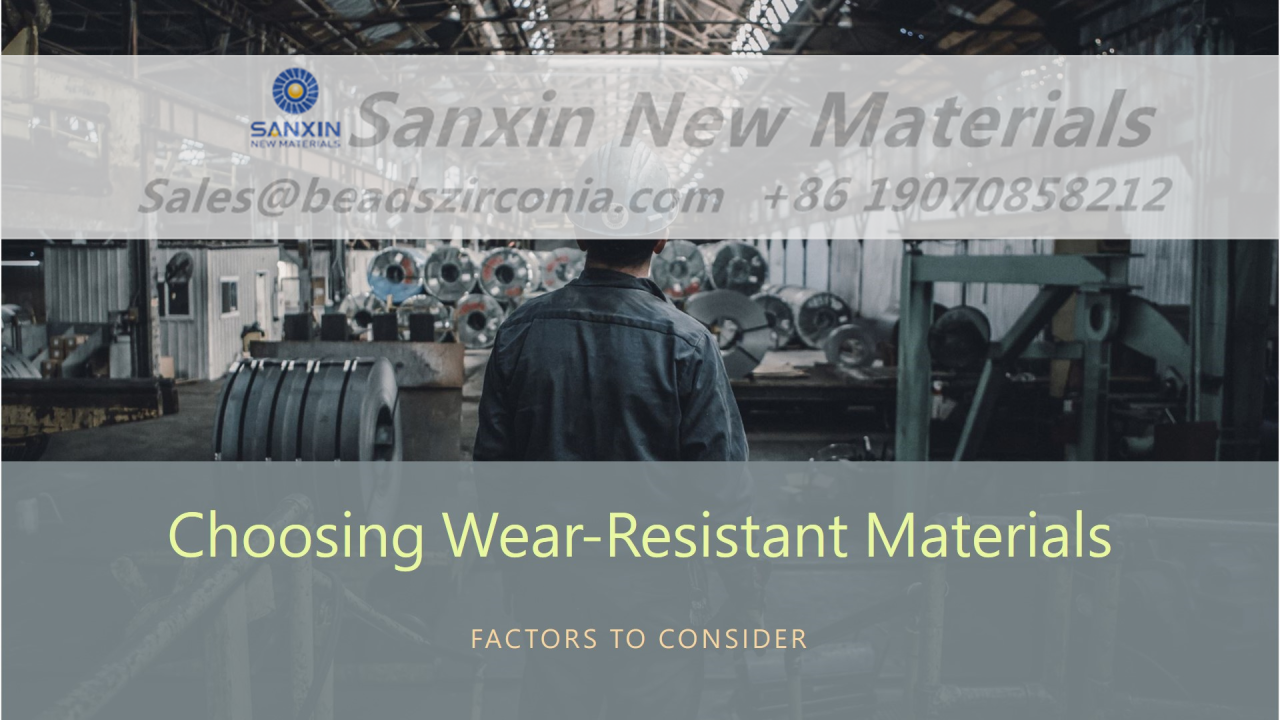Wear is an unavoidable challenge in both everyday activities and industrial operations. Whether in machinery, construction, or even household appliances, wear contributes to energy loss, component failure, and increased operational costs. Understanding the mechanisms of wear and choosing appropriate wear-resistant materials is critical for minimizing these effects and improving the longevity of equipment.
In this detailed guide, we’ll explore various types of wear, the factors influencing wear rates, and how to choose the best materials to mitigate wear-related damage. In addition, we'll examine the role of wear-resistant ceramics in high-performance applications and how modern technology is advancing the field of wear-resistant materials.

Wear occurs when two surfaces or materials come into contact and move relative to each other, resulting in material loss. This phenomenon affects numerous industries, from heavy machinery to medical devices. As surfaces interact, the friction between them leads to the gradual deterioration of one or both surfaces, reducing the material’s size, shape, or functionality over time.
The impact of wear can be severe, often causing energy inefficiencies, component malfunctions, or even complete failure of machinery. The consequences of wear are not only limited to reduced operational efficiency but also include safety risks and increased maintenance costs.
Understanding the different types of wear and how they occur is key to selecting the right materials for wear resistance.
Wear can be classified into several categories based on the mechanisms of material degradation. The primary types of wear include abrasive wear, adhesive wear, surface fatigue wear, corrosive wear, and fretting wear. Each type presents unique challenges and requires specific materials or treatments to mitigate.
Abrasive wear, or abrasion, is the most common type of mechanical wear. It occurs when a harder material slides or grinds against a softer one, removing material from the softer surface. Abrasive wear is prevalent in industries that use cutting, grinding, or drilling machinery, such as mining, construction, and manufacturing.
Common examples of abrasive wear include the wear of excavator teeth or the liners of ball mills. These components are subjected to intense friction as they encounter hard particles, leading to surface degradation over time.
Relative Hardness: The hardness of the materials involved plays a significant role in determining wear rates. Materials with a higher hardness are better able to resist abrasive forces, while softer materials are more susceptible to wear. Abrasive wear is minimized when the hardness of the abrasive is equal to or less than the material being worn.
Abrasive Characteristics: The size, shape, and sharpness of abrasive particles directly impact the wear rate. Sharper, larger particles tend to cause more severe wear, though once particle size reaches a certain threshold, further increases in size no longer correlate with increased wear.
Repeated Friction: At the initial stage of contact, wear rates are often high as the rough surfaces smooth out. Over time, the wear stabilizes as surface irregularities are reduced. This process is known as "running-in."
Sliding Speed: The speed at which two surfaces slide over each other affects wear, particularly for metal materials. If the sliding speed is too low, wear rates remain consistent. However, at high speeds, excessive heat can cause material softening, increasing wear.

To combat abrasive wear, selecting materials with high hardness is essential. Wear-resistant ceramics, such as alumina, are highly effective in this context. Ceramics offer superior resistance to abrasion due to their high hardness, making them ideal for applications involving heavy friction and particle impact.
Adhesive wear occurs when two surfaces in relative motion come into contact under high pressure, causing localized bonding. As the surfaces continue to slide, these bonds break, leading to the transfer of material between the surfaces or the creation of wear particles. Adhesive wear is particularly problematic in metal-to-metal interactions, where the materials have high mutual solubility or affinity for bonding.
This type of wear is common in industrial machinery, automotive components, and other applications involving high loads and sliding speeds. When adhesive wear becomes severe, it can lead to "galling" or "seizing," where the bonded surfaces stick together and fail to move smoothly.
Material Properties: The solubility and chemical affinity of the materials in contact significantly influence the likelihood of adhesive wear. Similar metals or materials with high mutual solubility are more prone to adhesion, while dissimilar metals or non-metallic materials tend to resist adhesive wear better.
Microstructure: The internal structure of materials affects their resistance to adhesive wear. For example, cast iron and carbon steel tend to exhibit better adhesive wear resistance than stainless steel or austenitic alloys due to their brittle nature.
Load and Speed: High loads and sliding speeds increase the risk of adhesive wear. As surface pressure increases, the likelihood of surface bonding grows, leading to material transfer or surface failure. High speeds can also raise surface temperatures, exacerbating adhesive wear by weakening the boundary layer between surfaces.
To prevent adhesive wear, it is important to choose materials with low solubility or chemical affinity for each other. Ceramics are an excellent choice because of their self-lubricating properties and low tendency to bond with metals. Additionally, surface treatments, coatings, and lubricants can help reduce the risk of adhesive wear in metal components.
Surface fatigue wear occurs when a material is subjected to cyclic or repeated contact stresses, causing the initiation and propagation of fatigue cracks. Over time, these cracks grow, leading to material loss and, ultimately, component failure. Surface fatigue wear is particularly common in rolling or sliding contact applications, such as gears, bearings, and wheels.
Material Hardness: Surface fatigue resistance generally increases with the hardness of the material. However, if the hardness exceeds a certain threshold, the material can become too brittle, leading to premature cracking and failure.
Surface Roughness: Smoother surfaces are less likely to experience fatigue wear, as they reduce the likelihood of stress concentrations at surface irregularities. Rough surfaces, on the other hand, promote crack initiation and growth.
Friction Force: Frictional forces between surfaces in contact can increase the risk of fatigue wear by promoting the formation of micro-cracks. These forces cause localized stress concentrations that accelerate the wear process.
Improving the hardness and smoothness of surfaces is key to preventing fatigue wear. Surface treatments such as hardening or coating can enhance fatigue resistance by creating a more durable surface layer. Wear-resistant ceramics, with their high hardness and smooth surface properties, are ideal for applications requiring long-term resistance to cyclic stress.
Corrosive wear occurs when the surface of a material undergoes chemical or electrochemical reactions with environmental elements, such as moisture, acids, or gases, during friction. These reactions cause material degradation and loss, which is exacerbated by the frictional forces acting on the surface. Corrosive wear is commonly found in environments where machinery is exposed to chemicals, water, or other corrosive agents, such as in chemical processing, marine, or mining industries.
Environmental Conditions: The presence of moisture, chemicals, or other corrosive agents increases the likelihood of corrosive wear. Materials that are not resistant to chemical attack are particularly vulnerable.
Material Composition: Some materials, such as stainless steel or aluminum, are more resistant to corrosion than others. The choice of material plays a significant role in determining how well a component can withstand corrosive wear.
Protective Coatings: Applying protective coatings to susceptible materials can reduce the impact of corrosive wear by creating a barrier between the material and the environment.
To mitigate corrosive wear, selecting materials with high chemical resistance is critical. Wear-resistant ceramics, particularly alumina, offer excellent protection against corrosive environments due to their chemical stability. Additionally, applying corrosion-resistant coatings or using corrosion inhibitors can prolong the lifespan of materials exposed to harsh environments.
Fretting wear occurs when two surfaces experience small-amplitude, oscillatory relative motion, typically under fluctuating loads. This form of wear is common in bolted joints, bearings, or components that experience micro-movements during operation. Fretting wear generates small wear particles, often oxides, between the surfaces, leading to further surface degradation and potential failure.
Amplitude of Motion: Fretting wear is most pronounced when the relative motion between surfaces is less than 100 micrometers. Larger movements may lead to other types of wear, but in small-scale motion, fretting dominates.
Load Conditions: High loads increase the contact pressure between surfaces, intensifying fretting wear by causing more significant surface deformation and particle formation.
Environmental Factors: The presence of moisture, air, or other environmental factors can accelerate fretting wear by promoting the formation of oxides or other wear debris.
To reduce fretting wear, materials with high resistance to micro-motion damage should be used. Applying coatings or lubricants can also minimize the effects of fretting by reducing friction and wear particle generation. In some cases, design modifications that limit relative motion between components can be effective in preventing fretting wear.

As industries evolve and demand more durable and efficient materials, advances in material science are continually improving the performance of wear-resistant materials. Emerging technologies such as nanomaterials, advanced ceramics, and hybrid composites are providing new solutions to combat wear in even the harshest environments.
Nanomaterials, including nanoparticles and nanopowders, are revolutionizing the field of wear-resistant materials. Due to their ultra-small particle size and high surface area, nanomaterials exhibit unique mechanical and chemical properties that enhance wear resistance.
For example, Sanxin New Materials Co., Ltd., a leader in wear-resistant ceramics and nanomaterials, specializes in producing high-performance nanoparticles that are incorporated into ceramic materials to improve their hardness, toughness, and wear resistance. These materials are particularly effective in high-temperature environments where traditional materials would fail.
Nanomaterials also offer self-lubricating properties, reducing friction and minimizing adhesive wear. Their ability to form protective surface layers during wear further enhances their durability.
Ceramics have long been used for their exceptional hardness and wear resistance, but recent advancements in ceramic technology have expanded their application in modern industries. Wear-resistant ceramics, such as those made from alumina, zirconia, and silicon carbide, are now used in a wide range of applications, including mining, aerospace, and energy.
Ceramics are particularly effective in environments where high abrasion, chemical exposure, or extreme temperatures are present. Their ability to maintain structural integrity under severe conditions makes them ideal for components such as bearings, pumps, and cutting tools.
Hybrid composites combine the strengths of multiple materials to create a product that offers superior wear resistance, toughness, and durability. By blending ceramics, metals, polymers, and nanomaterials, hybrid composites provide tailored solutions for specific wear challenges.
In industries such as automotive, aerospace, and manufacturing, hybrid composites are increasingly being used in high-performance components, such as gears, shafts, and valves. These materials offer a balance between weight, strength, and wear resistance, making them ideal for demanding applications.
In the mining industry, machinery is constantly exposed to abrasive wear from rocks, minerals, and other hard particles. Traditional materials, such as steel, quickly wear down, leading to frequent maintenance and downtime. However, the introduction of wear-resistant ceramics has dramatically improved the durability of mining equipment.
For example, wear-resistant ceramic liners in ball mills and crushers have significantly extended the lifespan of these components, reducing maintenance costs and increasing operational efficiency. Additionally, ceramic milling balls, produced by Sanxin New Materials Co., Ltd., offer superior wear resistance compared to steel balls, ensuring longer service life and higher grinding efficiency.
In aerospace applications, components are subjected to extreme temperatures, high friction, and corrosive environments. Wear-resistant materials, such as advanced ceramics and hybrid composites, play a critical role in maintaining the performance and safety of aircraft engines, turbines, and landing gear.
Ceramics, with their ability to withstand high temperatures and resist wear, are used in turbine blades and bearings, ensuring long-term reliability in harsh operating conditions. Nanomaterials, with their lightweight and high-strength properties, are also being explored for use in next-generation aircraft components.
The automotive industry demands materials that can endure high levels of friction, heat, and wear. Wear-resistant materials are essential for ensuring the longevity of engine components, transmission systems, and braking mechanisms.
Ceramic coatings and hybrid composites are increasingly being used in automotive parts to reduce friction, improve wear resistance, and enhance fuel efficiency. For example, ceramic brake pads provide superior wear resistance and heat dissipation compared to traditional metal brake pads, resulting in improved performance and longer service life.
As industries continue to demand more durable, efficient, and cost-effective solutions, the development of wear-resistant materials will remain a critical area of research and innovation. Advances in nanotechnology, ceramics, and hybrid composites are paving the way for new materials that offer unprecedented levels of wear resistance, enabling equipment and components to operate longer, more efficiently, and with fewer maintenance requirements.
Wear-resistant ceramics, in particular, are emerging as a key solution for industries facing extreme wear challenges. With their exceptional hardness, chemical stability, and resistance to abrasion and fatigue, ceramics are poised to become the material of choice for high-performance applications in mining, aerospace, automotive, and beyond.
For companies seeking the best in wear-resistant solutions, Sanxin New Materials Co., Ltd. offers a wide range of cutting-edge products, including ceramic milling balls, nanoparticles, and abrasion-resistant ceramics. By leveraging the latest advancements in material science, Sanxin provides durable, reliable solutions that help industries minimize wear, reduce costs, and optimize performance.

Submit your demand,
we will contact you ASAP.

Sanxin New Materials Co., Ltd. focus on producing and selling ceramic beads and parts such as grinding media, blasting beads, bearing ball, structure part, ceramic wear-resistant liners, Nanoparticles Nano Powder

